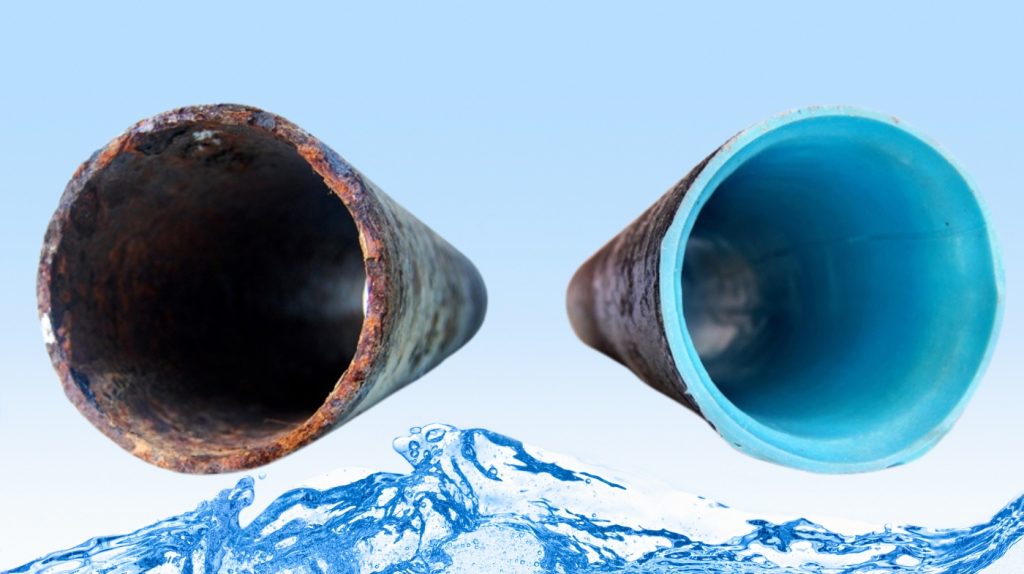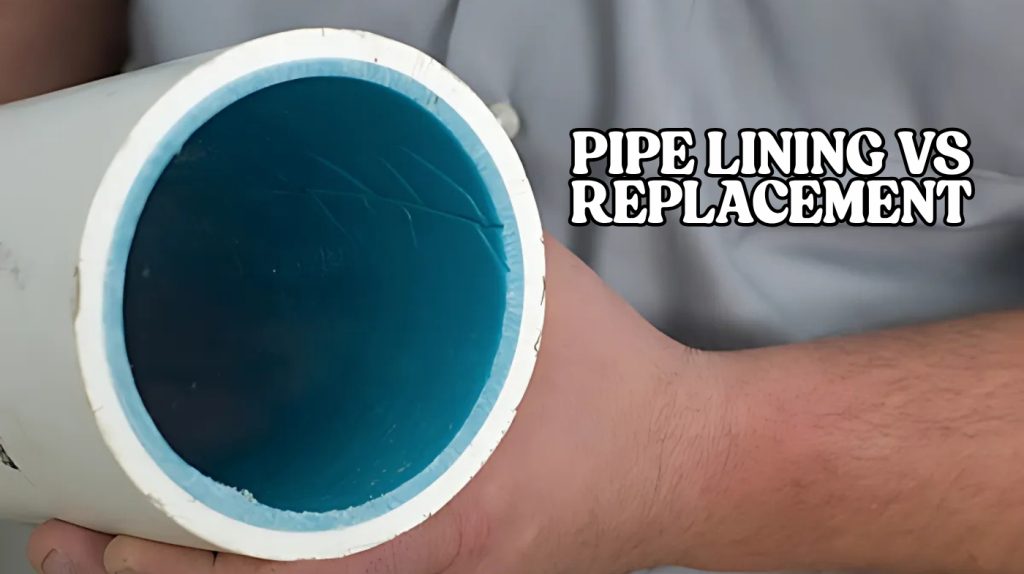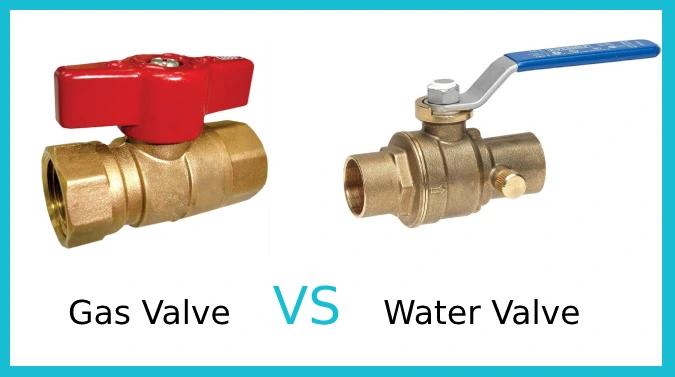Last Updated on June 4, 2025
When deciding between pipe lining and replacement, consider pipe condition and disruption. Pipe lining inserts a resin-coated liner to strengthen pipes with minimal excavation, costs $80–$250 per foot, lasts 35–50 years, and reduces property impact.
Replacement involves full excavation, higher upfront and hidden costs, longer downtime, and materials offer 40–70+ year lifespans. Lining suits minor to moderate damage; replacement is necessary for severe failures.
Understanding these factors helps you choose the best approach for durability, cost, and environmental impact.
Key Takeaways
- Pipe lining installs a resin-coated liner inside existing pipes, extending lifespan up to 50 years with minimal excavation and disruption.
- Full pipe replacement eliminates severely damaged pipes and provides long-lasting materials like cast iron or PVC, known to last 40–70+ years, often with extended coverage from providers.
- Pipe lining costs $80–$250 per foot, generally lower than replacement, which includes extra expenses for excavation, landscaping, and labor.
- Replacement requires 11–26 days and significant property disturbance, while pipe lining completes in 3–6 days with minimal impact.
- Pipe lining suits minor to moderate damage; replacement is necessary for severe pipe collapse, ensuring safety and long-term reliability.
Understanding Pipe Lining
How does pipe lining restore damaged sewer systems without disruptive excavation? You insert a resin-coated liner, typically epoxy, into the existing pipe using the Cured-in-Place Pipe (CIPP) method.
Once positioned, you cure the liner in place through heat or UV light, transforming it into a rigid, corrosion-resistant new pipe within the old. This trenchless technique eliminates the need for digging, minimizing environmental disruption and reducing labor costs.
The resulting pipe lining offers a smooth surface that improves flow efficiency and resists leaks and clogs. Designed for durability, these liners can extend the pipe’s service life up to 50 years.
You’ll find this method especially practical for pipes under roads or buildings, where excavation is impractical or prohibited, making it a cost-effective, efficient solution for sewer rehabilitation.
Additionally, regular maintenance and inspection are critical to ensure the long-term performance of the lined pipes.
Understanding Pipe Replacement
While pipe lining offers a trenchless solution to restore damaged sewer systems, pipe replacement addresses scenarios where pipes are beyond repair or constructed from outdated materials.
Replacement involves complex excavation or trenchless techniques like pipe pulling, splitting, or bursting to remove and install new pipes. Pipe replacement ensures a complete renewal of the plumbing system by removing damaged pipes and installing new ones.
You’ll need thorough inspection and planning to determine the extent of damage or outdated materials such as lead or galvanized steel that mandate replacement.
This process demands more time and incurs higher costs due to labor-intensive excavation and installation. Identify issues like leaking pipes that often necessitate full replacement rather than lining.
However, replacing severely corroded or collapsed pipes eliminates leaks, enhances water flow, improves safety by removing hazardous materials, and increases property value.
You’ll finish by testing and restoring the site, ensuring long-term durability and efficiency that pipe lining mightn’t achieve under these conditions.
Cost Comparison Between Pipe Lining and Replacement
You’ll find that initial costs for pipe lining generally fall within a moderate range, often lower than full replacement, especially when accounting for excavation and restoration expenses. Proper installation and material choice, similar to considerations for a check valve, can influence long-term success.
However, considering long-term financial impact requires analyzing durability and potential future maintenance or repairs. Hidden costs like landscaping, site disruption, and additional post-replacement fixes can considerably affect the total expense, influencing your cost-efficiency decision.
The overall cost also depends significantly on the repair method, with trenchless repairs like pipe lining often preserving landscaping and reducing environmental impact compared to traditional replacement.
Initial Cost Differences
Although both pipe lining and traditional replacement involve significant expenses, understanding their initial cost differences can help you make an informed decision.
Trenchless pipe lining typically costs between $80 and $250 per foot, averaging $6,000 to $12,000, while traditional replacement ranges from $50 to $250 per foot, with averages from $4,000 to $13,000.
Consider these key factors:
- Small-scale lining repairs start around $3,000 to $4,000.
- Extensive repairs may reach $20,000 for both methods.
- Traditional replacement often incurs extra re-landscaping costs, pushing totals to $25,000 or more.
- Depth and pipe length influence cost-effectiveness—trenchless excels with deeper, longer pipes. Proper preparation for disassembly ensures that repair or replacement work proceeds safely and efficiently.
Using a high-definition waterproof camera inspection beforehand can provide clear visuals to accurately assess the damage and pipe type, ensuring the chosen repair method is optimal.
Understanding these differences guarantees you select the most cost-efficient option for your specific project parameters.
Long-Term Financial Impact
Because long-term costs hinge on factors beyond initial expenses, choosing between pipe lining and replacement requires careful evaluation of future financial impacts.
Pipe lining extends pipe lifespan by over 50 years, reducing repair frequency and minimizing labor, material, and restoration costs. It also avoids recurring expenses tied to excavation, landscaping, and property restoration, especially for deep or hard-to-access pipes.
This method typically involves inserting a flexible, strong liner inside existing pipes, creating a new pipe within the old one, which means less disruption to the property (pipe lining method).
Additionally, pipe lining reduces the risk of leaks by sealing cracks without the need for manual tightening or part replacement. In contrast, replacement demands higher upfront and potential recurring expenses due to more invasive installation and frequent ancillary repairs.
While new pipes may require less maintenance initially, the extended downtime and operational disruptions increase total costs. Furthermore, replacement often necessitates valve tightening or gasket replacement to address leaks that can arise post-installation.
Additionally, pipe lining preserves property value by maintaining architecture and minimizing surface damage, whereas replacement can temporarily lower value due to visible excavation.
Hidden and Additional Expenses
When evaluating pipe lining versus replacement, account for hidden and additional expenses that extend beyond initial equipment and labor costs.
Traditional replacement often incurs substantial unanticipated costs due to excavation, landscaping restoration, and structural repairs, which can add $12,000 or more. In contrast, pipe lining minimizes these expenses by avoiding invasive digging.
Consider these key factors:
- Excavation and property restoration costs considerably inflate replacement projects.
- Multiple contractors may be required post-excavation, increasing labor expenses.
- Replacement risks discovering further damaged pipes, escalating material and labor costs.
- Pipe lining reduces emergency repair likelihood and typically involves fewer safety and insurance costs.
Additionally, while traditional replacement may cost between $4 to $15 per linear foot, pipe lining costs range from $80 to $250 per linear foot but often prove more economical when hidden expenses are considered.
Moreover, just like choosing between a submersible pump and an external pump, selecting the right pipe repair method depends on specific project needs and long-term efficiency.
Time and Disruption Factors
You’ll notice pipe lining completes considerably faster, often within a week, compared to the multi-week timeline required for full replacement. This speed reduces property impact, avoiding extensive excavation and restoration.
It also minimizes the risk of complications often seen when systems are forced to share a single discharge hose. Consequently, your daily activities face minimal disruption with lining, whereas replacement demands considerable adjustments and potential temporary relocation.
Additionally, pipe lining involves inserting and inflating a liner inside the existing pipe, creating a seamless inner pipe that restores functionality quickly.
Project Duration Comparison
Although both pipe lining and pipe replacement address damaged piping, they differ considerably in project duration and associated disruptions. When you evaluate your options, consider these key time and disruption factors:
- Pipe lining typically completes within 3–6 days, using trenchless methods that minimize site disturbance and allow ongoing property use. This trenchless method preserves landscaping and structures by avoiding extensive digging. Additionally, trenchless methods can contribute to energy efficiency by reducing the need for heavy machinery and lengthy excavation.
- Pipe replacement requires 11–26 days, including excavation, pipe removal, installation, and restoration, markedly extending downtime.
- Lining involves minimal setup and curing phases, often finished in hours to a few days, reducing labor intensity and noise.
- Replacement demands extensive excavation and restoration, causing prolonged disruption, restricted access, and increased noise and dust.
Choosing pipe lining can markedly shorten project duration and reduce operational impact, while replacement, though more invasive, might be necessary for extensive damage.
Property Impact Levels
Evaluating project duration naturally leads to appraising the broader property impact, particularly regarding time and disruption levels. Pipe lining markedly reduces physical disruption by eliminating extensive excavation, which protects landscaping, driveways, and architectural integrity.
Its trenchless nature preserves visual and structural elements, minimizing restoration needs and maintaining the property’s aesthetic value.
Additionally, pipe lining is typically completed quickly, often within 1-2 days, further reducing inconvenience to the property owner. This method also contributes to energy efficiency by maintaining the integrity of existing systems without unnecessary replacements.
Conversely, pipe replacement involves substantial excavation, causing temporary visual disturbances and necessitating repairs to walls, floors, or gardens, extending overall downtime.
Replacement may require water service shutdowns and restrict access to parts of the property, increasing disruption duration. Pipe lining’s shorter operational downtime supports faster project completion and less interruption to property functionality.
Your choice between these methods hinges on balancing minimized disruption and restoration demands against long-term benefits and property value enhancement.
Daily Activity Disruption
Because daily activities depend heavily on uninterrupted water service and accessibility, understanding the time and disruption factors of pipe lining versus replacement is essential. Pipe lining offers a significant advantage by minimizing downtime and physical disruption.
Here’s what you need to contemplate:
- Installation Time: Pipe lining often completes within a day, whereas replacement can take several days due to excavation and pipe installation.
- Service Interruption: Lining allows rapid restoration of water service, minimizing impact on your home or business operations. This quick turnaround also helps reduce the overall project duration.
- Accessibility: Replacement requires excavation, potentially blocking access and disrupting traffic; lining is trenchless, preserving accessibility.
- Operational Disruptions: Pipe lining’s minimal workforce and equipment presence reduce disturbance, enabling businesses and residents to maintain regular routines.
Durability and Longevity Considerations
When evaluating pipe durability and longevity, you must consider the distinct lifespan ranges and material properties of lining versus replacement options. Epoxy pipelining typically lasts 35 to 50 years, with accelerated tests suggesting up to 80 years. While CIPP lining ranges from 25 to 50 years.
Traditional pipe replacement, however, often extends from 40 to 70 years or more, offering superior long-term durability. The existing pipe’s condition critically influences lining effectiveness; moderate damage suits lining, whereas severe damage demands replacement.
Lining materials generally lack the robustness of new pipe materials, necessitating regular monitoring to maintain integrity. Additionally, many pipes are primarily made from PVC, which is favored for its resistance to corrosion and temperature safety.
Proper installation and maintenance are essential to ensure a reliable water supply when pipes serve multiple households. Replacement guarantees complete structural renewal but requires invasive excavation.
Environmental Impact of Each Method
Although both pipe lining and replacement serve to restore pipeline function, they differ markedly in their environmental impacts. You’ll find pipe lining uses less water, generates minimal waste by leaving existing pipes in place, and requires less machinery, which cuts its carbon footprint.
However, it emits styrene and other chemicals during curing, posing localized aquatic risks. Studies show that water in properly functioning P-traps helps prevent styrene emissions from entering buildings during the curing process.
Pipe replacement, conversely, demands resource-intensive production and disposal of old pipes, contributing to landfill volume and higher transportation emissions.
Consider these key differences:
- Pipe lining minimizes waste and energy use; replacement creates significant material waste and consumes more energy.
- Chemical emissions in lining are localized; replacement emissions arise mainly from manufacturing and transport.
- Replacement increases landfill burden; lining preserves existing infrastructure.
- Both methods must comply with environmental regulations but vary in aquatic ecosystem impacts.
Suitability Based on Pipe Damage Severity

Determining the suitability of pipe lining versus replacement hinges on the severity of the pipe damage you’re facing. For minor damage, such as small cracks, root intrusion, or corrosion, pipe lining offers an efficient, cost-effective solution without excavation, extending pipe life by decades.
Initial inspection with a small camera is critical to assess the exact damage location and type before deciding on lining or replacement. With moderate damage, including localized deterioration and small leaks, lining remains viable if the host pipe maintains structural integrity to support the liner.
However, severe damage—characterized by major collapses, large fractures, or complete failure—necessitates full pipe replacement to restore durability and safety. Replacement often requires excavation and can cost significantly more, reflecting the traditional pipe replacement process.
Replacement is more invasive but essential when pipes contain hazardous materials or are fundamentally compromised. Accurately evaluating damage severity through professional evaluation enables you to select the appropriate method, balancing cost, disruption, and long-term performance.
Making an Informed Decision Based on Needs
When choosing between pipe lining and replacement, you must assess your specific needs, including budget constraints, pipe condition, and environmental impact.
If your pipes are deep, cracked, or suffering from root intrusion, trenchless lining or bursting offers a durable, cost-effective solution, typically costing $6,000 to $12,000. These methods eliminate costly labor and excavation, making them more affordable compared to traditional repairs.
For shallow pipes with extensive damage, traditional replacement, though pricier, may be necessary. Consider environmental factors: trenchless methods preserve landscaping, reduce soil disruption, and minimize noise, benefiting both your property and community.
Time and convenience also matter; trenchless repairs complete faster with less disruption. Ultimately, weigh upfront costs against long-term savings, durability, and ecological impact to make an informed decision tailored to your situation.
Frequently Asked Questions
Can Pipe Lining Be Used for Both Residential and Commercial Properties?
Yes, you can use pipe lining for both residential and commercial properties. It adapts well to different pipe sizes and system complexities. For residential use, it’s cost-effective and minimally disruptive.
Commercial applications benefit from its capacity for larger diameters and compliance with stricter regulations.
The technique offers durable, corrosion-resistant protection, making it an efficient choice across various settings with varying volume demands and network configurations.
How Does Pipe Lining Affect Water Pressure in Plumbing Systems?
You might think adding a layer inside your pipes would slow water down, right? Actually, pipe lining reduces friction and prevents mineral buildup, so water flows smoother and faster through your system.
It maintains pipe diameter, stabilizes pressure, and seals leaks, which stops pressure drops. This means you get improved flow rates and consistent water pressure without the usual wear and tear causing unexpected drops.
It’s a smart, technical upgrade for reliable plumbing.
Are There Any Health Risks Associated With Pipe Lining Materials?
Yes, you should be aware that pipe lining materials can pose health risks. Exposure to volatile organic compounds (VOCs) like styrene may cause respiratory irritation and headaches. Some chemicals in linings act as endocrine disruptors or carcinogens.
You can reduce risks by ensuring proper ventilation and using protective gear during installation. Opting for VOC-free, styrene-free alternatives like epoxy resins also helps minimize exposure to harmful substances.
What Is the Typical Lifespan of a Pipe Lining Compared to Replacement Pipes?
Think of pipe lining as a sturdy shield that adds 50+ years to your pipes’ life, thanks to durable materials like epoxy resin and CIPP. Replacement pipes, on the other hand, offer a fresh start, often lasting several decades depending on material choice.
While lining depends heavily on installation quality and pipe condition, replacement provides a new framework less susceptible to prior damage, ensuring long-term reliability you can count on.
Can Insurance Cover the Costs of Pipe Lining or Replacement?
You typically won’t find standard homeowners insurance covering routine pipe lining or replacement costs. Coverage usually applies only if the damage is sudden and accidental, like a burst pipe.
To get protection for pipe repairs, you’ll likely need a specific endorsement, such as a sewer line add-on. Review your policy carefully, as coverage limits, conditions, and costs vary widely, and endorsements often cover excavation, repair, and restoration expenses.
Lining or Replacement: Making the Right Choice for Your Pipes
When deciding between pipe lining and replacement, remember that “a stitch in time saves nine.” Pipe lining offers a cost-effective, less disruptive solution for minor to moderate damage, while replacement suits severe deterioration.
Consider durability, environmental impact, and material carefully.
By analyzing your pipe’s condition and weighing time, cost, and longevity factors, you’ll make a precise, informed choice that guarantees lasting performance and minimizes future risks.



